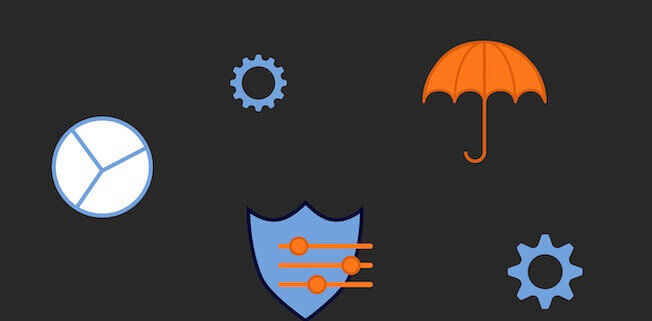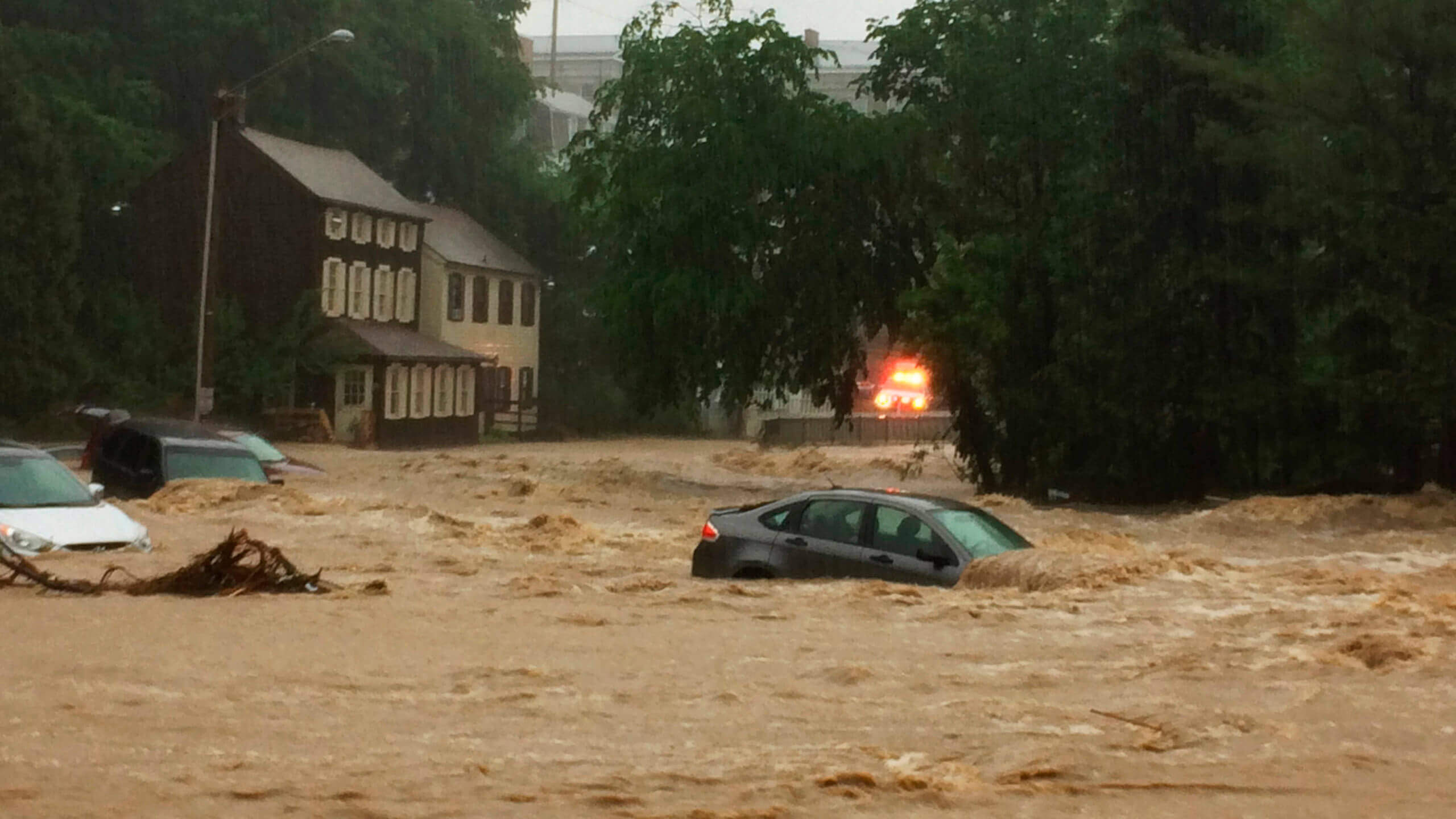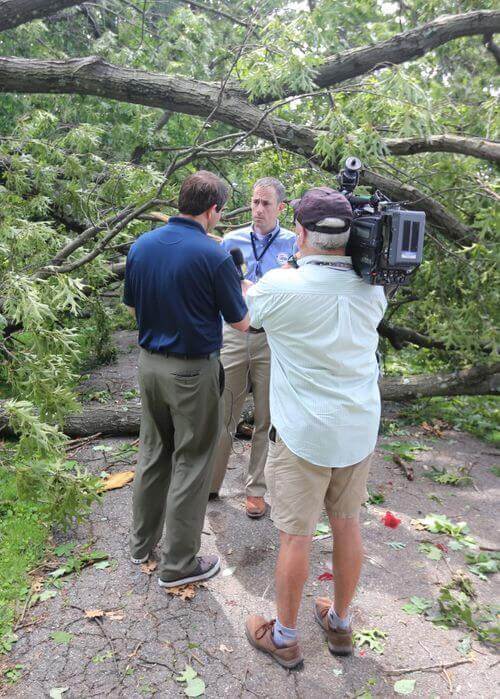
How Job Shops Can Jumpstart Business Continuity
Fire. Tornado. Violence. For CEOs and leadership teams at job shops—which manufacture physical products in physical locations—words like these demand quick and organized action. But what does business continuity for job shops look like? When an emergency strikes, shops may have to physically evacuate their facilities and then make equally quick recovery decisions to avert a major break in supply chain operations.
I’ve seen what happens when the unthinkable takes place; I managed the response and recovery for two “one-in-a-thousand-year” flash flood disasters within two years. It was a humbling experience, and I witnessed firsthand the devastating effects disaster has on businesses. Now in 2022, it seems as though disaster and disruption is a looming menace that could upend any business at any time.

Image from one of the Ellicott City floods, which both took place under Ryan’s leadership as the Director of Emergency Management for the county.
But what can you do? Especially considering your staff and resource limitations?
You must take action on business continuity planning. Having a business continuity program is already a best practice, and it is quickly becoming an expectation of those that depend on your products. It may actually be a contractual requirement. And for good reason; not being ready to respond and recover could result in lost revenue, ruin your reputation, and even put you out of business.
You may think that preparing for disruption or disaster is too hard, too expensive, or not worth the effort. I’d like to try to change your mind.
Maintaining Business Continuity for Job Shops: A Three-Part Framework
Below is a three-part framework your job shop can immediately use to advance your business continuity capabilities. The best part? These efforts will help cover a multitude of situations:
1. Stay Flexible
When leaders decide to get ready for disruption or disaster, they often start by listing the hazards—or hazard combinations—they are most likely to face. But doing so will likely lead you in the wrong direction or put your focus on the wrong things.
Rather than conducting complicated hazard-related business impact assessments, you’re better off considering the impacts to your operations in three primary areas: the loss of people, facilities, and resources.
A forward-facing approach addresses questions such as:
- How do we reduce single points of failure within our team?
- How could we leverage our various facilities to keep operations up and running?
- What extra resources could we have on hand to buffer certain losses?
- What impacts could the loss of electricity, water, or data have on our operations?
- Should we invest in digitization efforts today to lessen the impact of a physical disaster?
2. Keep it lightweight
It’s hard to imagine how a sudden emergency may impact your operations. But keep in mind it does not need to be a catastrophic event. What would you do if you arrived at your facility one morning only to be denied entry by law enforcement for any number of realistic scenarios? Depending how long it lasted, the consequences could be devastating and may not be covered by insurance.
“When answering questions like these, keep documentation lightweight (i.e., paperless) and as simple as possible. That three-inch-thick emergency binder sitting in your office is meaningless if the building burns down.”
If you’re a single-facility operation and had planned for a loss of your facility, you may be able to shift some operations to another location as part of a partnership or execute any number of continuity strategies.
Lightweight planning is agile and adaptive, and sets you up with strategies you can tap into when you need them. Jumpstart the process with your team by talking through some simple scenarios, but focus on impacts and look for ways to increase recovery capability.
Here are a few more questions to discuss that will supercharge your efforts:
- Who will be calling the shots and directing our response and recovery efforts?
- How will our team connect and communicate in order to save time and avoid confusion?
- What documents, records, lists should we collect now so we are ready to go should we urgently need access to them?
When answering questions like these, keep documentation lightweight (i.e., paperless) and as simple as possible. That three-inch-thick emergency binder sitting in your office is meaningless if the building burns down. And as COVID taught us, chances are, no one would think to look at it anyway. So, consider plans more as a series of prompts for your team to follow versus pages of detailed instructions.
Disaster Preparedness: 3 Tips for Manufacturers
3. Keep it fresh and take appropriate credit
When your leadership team invests in business continuity, it isn’t a sunk cost in planning for things that will never happen – it is value producing. It shows your insurers, “We’ve put effort into this. We are committed to reducing risk. We’re not counting on insurance should we suffer business interruption or a disaster. We’ve got strategies in place.”
These words are also music to the ears of customers, investors, board members, and employees as well. They’re proof that you are proactively taking steps to mitigate risk, focused on achieving your mission, and are protecting livelihoods.
Executives who work through this process, especially when they involve diverse layers of their team, will see an increase in employee confidence in particular; employees appreciate when their leaders are considering the company’s long-term survival.
Start a Dialogue Now
Most leaders are optimistic: they hope the unthinkable will never happen to their job shop, and they put off doing the simple things that advances preparedness. That doesn’t have to be you – let’s prove it together.
I encourage you to attend one of my free, 75-minute workshops to get started with a foundation of best practices and learn immediately actionable strategies for disruption or disaster.
Want to kickstart your job shop’s business continuity planning?
—
Ryan Miller is the Principal of Critical Functions, LLC, a risk management consulting firm that helps executives in midsize aerospace and defense manufacturing stay ahead of threats to their business. Ryan’s career has exposed him to nearly every disaster under the sun – train crashes, grid failures, public health emergencies, Derechos, tornados, civil unrest, and back-to-back disastrous floods. These experiences have allowed him to develop a deep appreciation for the businesses that make the products we depend on every day. To learn more, download Ryan’s free Disaster Preparedness eBook or sign up for one of his free workshops today.


